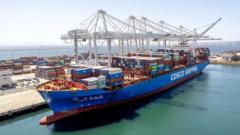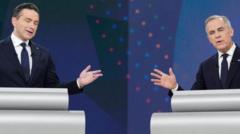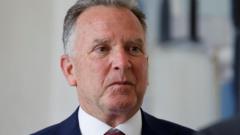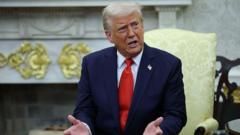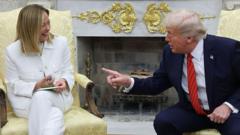The dynamics within the Trump administration have shifted regarding tariff policies, now highlighted by Treasury Secretary Scott Bessent's influence in pausing tariffs, which has drawn both critiques and support from key figures within the trade team.
Tariff Tug-of-War: The Role of Key Players in Trump's Trade Decisions

Tariff Tug-of-War: The Role of Key Players in Trump's Trade Decisions
As President Trump pauses reciprocal tariffs, Treasury Secretary Scott Bessent emerges as a pivotal figure amidst contrasting strategies.
In a surprising move, President Donald Trump's administration announced a pause on several "reciprocal" tariffs, marking a significant shift in the administration's trade strategy. Treasury Secretary Scott Bessent quickly took the center stage as the face of the decision during a press briefing on April 9, where he hailed the move as an act of "great courage." Bessent, a former hedge fund manager, has reportedly engaged in high-level discussions with business leaders, which played a critical role in swaying Trump's decision amid the tensions surrounding international trade.
Key allies in the tariff saga—Commerce Secretary Howard Lutnick and trade adviser Pete Navarro—were notably absent during the announcement, fueling speculation about shifting internal dynamics. Experts have pointed out that Bessent’s presence at the forefront demonstrates the evolving chess game happening in the White House, casting him as the "good cop" as opposed to Lutnick and Navarro, who have been linked with more hardline approaches.
While Trump hinted that the pause was a thought-out decision requiring several days of consideration, the White House has not elaborated on the driving forces behind the change. Bessent's past criticisms of tariffs and his extensive experience in the bond market are thought to have enabled him to effectively communicate with Trump, thereby gaining favor over the more confrontational stances of Lutnick and Navarro.
As the announcement unfolded, contradictions among various officials regarding tariff policy became apparent. This disarray reflects a lack of cohesive communication within the team, which has led to market volatility. Some analysts have suggested that the administration's strategy of deploying multiple spokespeople may complicate market perceptions and responses.
Looking ahead, experts predict that Bessent will assume a more prominent role in economic discussions, with Lutnick managing the negotiations while Navarro, Hassett, and others support the broader strategy. This restructured approach might usher in a clearer message necessary for stabilizing investor confidence, as companies seek predictability in this tumultuous economic landscape.
Key allies in the tariff saga—Commerce Secretary Howard Lutnick and trade adviser Pete Navarro—were notably absent during the announcement, fueling speculation about shifting internal dynamics. Experts have pointed out that Bessent’s presence at the forefront demonstrates the evolving chess game happening in the White House, casting him as the "good cop" as opposed to Lutnick and Navarro, who have been linked with more hardline approaches.
While Trump hinted that the pause was a thought-out decision requiring several days of consideration, the White House has not elaborated on the driving forces behind the change. Bessent's past criticisms of tariffs and his extensive experience in the bond market are thought to have enabled him to effectively communicate with Trump, thereby gaining favor over the more confrontational stances of Lutnick and Navarro.
As the announcement unfolded, contradictions among various officials regarding tariff policy became apparent. This disarray reflects a lack of cohesive communication within the team, which has led to market volatility. Some analysts have suggested that the administration's strategy of deploying multiple spokespeople may complicate market perceptions and responses.
Looking ahead, experts predict that Bessent will assume a more prominent role in economic discussions, with Lutnick managing the negotiations while Navarro, Hassett, and others support the broader strategy. This restructured approach might usher in a clearer message necessary for stabilizing investor confidence, as companies seek predictability in this tumultuous economic landscape.





